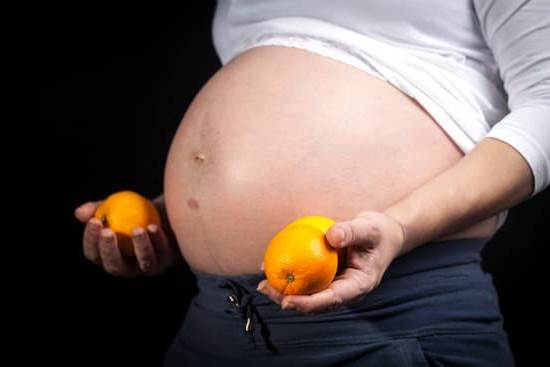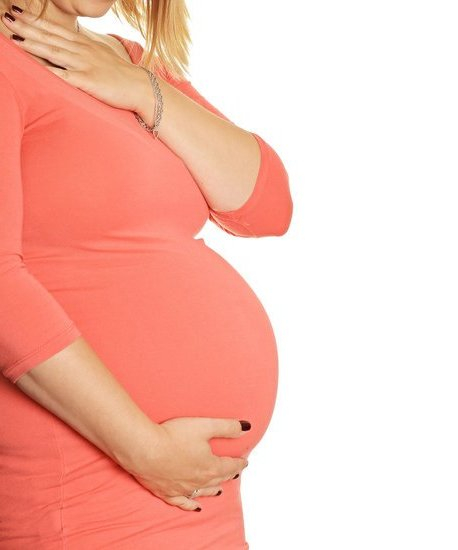For many women, distinguishing between PMS (premenstrual syndrome) and pregnancy symptoms can be a source of confusion and anxiety. It is important to understand the key differences between the two in order to effectively manage one’s reproductive health. In this article, we will explore the significance of recognizing the variance between PMS and pregnancy symptoms to provide clarity for women experiencing hormonal changes.
The term PMS is often used to describe a wide range of physical and emotional symptoms that occur in the days leading up to menstruation. These symptoms can include bloating, mood swings, fatigue, and breast tenderness. On the other hand, early pregnancy symptoms can also encompass similar experiences but with distinct differences. It is essential for women to familiarize themselves with these discrepancies to avoid unnecessary worry or misinterpretation.
By delving into the characteristics of both PMS and early pregnancy symptoms, we aim to equip women with knowledge that will help them navigate their own reproductive health more confidently. Whether it’s understanding when each set of symptoms typically occurs in the menstrual cycle or recognizing specific indicators such as a missed period or nausea, being able to differentiate between PMS and pregnancy symptoms is empowering and beneficial for overall well-being.
What Is PMS
Premenstrual syndrome (PMS) refers to a variety of physical and emotional symptoms that many women experience in the days leading up to their menstrual period. These symptoms typically occur in the second half of the menstrual cycle, known as the luteal phase, which begins after ovulation and ends when menstruation starts. PMS can vary widely between individuals, both in terms of the specific symptoms experienced and their severity.
Some of the most common physical symptoms of PMS include bloating, breast tenderness, headaches, and fatigue. Many women also experience emotional symptoms such as irritability, mood swings, anxiety, and depression during this time. It is important to note that not all women will experience PMS in the same way; some may have mild symptoms that are easily manageable, while others may experience severe symptoms that interfere with their daily lives.
One of the characteristics that differentiate PMS from pregnancy symptoms is its timing within the menstrual cycle. While PMS occurs in the days leading up to menstruation, pregnancy symptoms typically begin after implantation occurs, around 8-10 days after ovulation. This means that early pregnancy indicators like a missed period or nausea would not be associated with PMS. Understanding these distinctions is crucial for women who may be trying to conceive or who are concerned about a potential pregnancy.
| PMS Symptoms | Common Characteristics |
|---|---|
| Bloating | Occurs before menstruation |
| Irritability | Emotional symptom often associated with mood swings |
| Breast Tenderness | Occurs before menstruation due to hormonal changes |
What Are Pregnancy Symptoms
Pregnancy symptoms can often be confused with premenstrual syndrome (PMS), leading to anxiety and uncertainty for many women. Understanding the key differences between PMS and pregnancy symptoms is crucial for women who are trying to conceive or simply want to be aware of their reproductive health. This section will provide a detailed discussion of early pregnancy symptoms, including common indicators such as missed period, nausea, and breast tenderness.
One of the most well-known signs of early pregnancy is a missed period. While this can also occur due to stress or changes in the menstrual cycle, a missed period is often one of the first indicators that prompt women to consider the possibility of being pregnant. Nausea and morning sickness are also common early pregnancy symptoms, which can occur as early as two weeks after conception.
These symptoms may last for just a few weeks or throughout the entire first trimester. Breast tenderness and changes in the breasts are also often experienced by pregnant women due to hormonal fluctuations.
It is important to note that some symptoms associated with early pregnancy such as mood swings, fatigue, and food cravings can also be attributed to PMS. This overlap in symptoms can make it challenging for women to differentiate between normal premenstrual symptoms and pregnancy indicators. Therefore, it is essential for women to pay close attention to their bodies and track any noticeable changes in order to discern between PMS vs pregnancy symptoms.
| Pregnancy Symptom | Description |
|---|---|
| Missed Period | One of the first indicators; caused by hormonal changes. |
| Nausea/Morning Sickness | Can occur early on in pregnancy due to hormonal fluctuations. |
| Breast Tenderness | Changes in breast tissue due to increasing levels of hormones. |
Key Differences
PMS and pregnancy symptoms can often be confusing for women, leading to anxiety and uncertainty about their reproductive health. It is crucial to understand the key differences between these two conditions in order to avoid unnecessary stress and make informed decisions about seeking medical advice or taking a pregnancy test.
Some of the distinguishing factors between PMS and pregnancy symptoms include:
- Timing: PMS symptoms typically occur one to two weeks before the menstrual period, while early pregnancy symptoms may start as early as a few days after conception.
- Intensity: PMS symptoms are generally less severe than early pregnancy symptoms, which can be more intense and persistent.
- Duration: PMS symptoms usually subside once the menstrual period begins, while early pregnancy symptoms may continue or intensify throughout the first trimester.
Understanding these differences can help women recognize when their body is experiencing normal premenstrual changes versus potential signs of pregnancy.
It is important to note that there are also similarities in symptoms between PMS and early pregnancy, such as mood swings and fatigue. However, by paying close attention to the specific timing and intensity of these symptoms, women can begin to differentiate between the two conditions.
Additionally, tracking their menstrual cycle and taking a pregnancy test if there is a possibility of conception can further aid in clarifying whether they are experiencing PMS or early signs of pregnancy. By being proactive and knowledgeable about these differences, women can better manage their reproductive health with confidence.
Similarities
The confusion between PMS and pregnancy symptoms often arises due to the overlap of certain indicators. One such symptom that can be present in both PMS and early pregnancy is mood swings. Women may experience a range of emotions during both PMS and pregnancy, making it difficult to differentiate between the two.
Irritability, anxiety, and feeling weepy are common experiences shared by women during both PMS and early pregnancy. It is important for women to recognize that mood swings alone cannot be a reliable indicator of pregnancy and should be considered in conjunction with other symptoms.
In addition to mood swings, fatigue is another symptom that can be present both in PMS and early pregnancy. During the premenstrual phase, many women report feeling exhausted and having low energy levels, which can also occur during the early stages of pregnancy. This overlapping symptom can further add to the confusion for women trying to determine whether they are experiencing PMS or if they could potentially be pregnant.
While recognizing these similarities in symptoms between PMS and early pregnancy is important, it is crucial for women to understand that these indicators alone are not conclusive evidence of pregnancy. In many cases, tracking the timing, intensity, duration of symptoms, as well as taking a pregnancy test when appropriate, are key steps for distinguishing between PMS and potential pregnancy.
Seeking Professional Advice
When experiencing confusion about whether certain symptoms indicate PMS or potential pregnancy, seeking professional medical advice is always recommended. Healthcare providers can offer valuable guidance based on individual circumstances and provide accurate information about next steps to take for a reliable diagnosis. Consulting with a healthcare professional can help alleviate anxiety related to uncertainty about the presence of either PMS or possible early pregnancy symptoms.
Real-Life Experiences
I remember feeling incredibly nauseous and tired, wondering if I was pregnant or just experiencing severe PMS symptoms. It was a confusing and anxiety-inducing time for me, not knowing whether to expect my period or plan for a potential pregnancy. The uncertainty was overwhelming, and I wished there were more resources available to help me understand the differences between PMS and pregnancy symptoms.
Many women have similar stories of confusion when it comes to distinguishing between PMS and early pregnancy symptoms. Some have even taken multiple pregnancy tests due to the uncertainty, while others have delayed seeking medical advice out of fear or anxiety. The lack of clear information about the differences between PMS and pregnancy symptoms can lead to unnecessary stress for women during their reproductive years.
Importance of Clarity
Understanding the experiences of women who have encountered confusion between PMS and pregnancy symptoms highlights the importance of providing clarity in this area. Women need reliable information to help them navigate their reproductive health with confidence and peace of mind. By sharing our experiences and advocating for better education on this topic, we can empower women to make informed decisions about their health.
Supporting Women’s Well-Being
Promoting awareness about the differences between PMS and pregnancy symptoms is essential for supporting women’s overall well-being. Having access to accurate information about these reproductive health matters can alleviate unnecessary stress, reduce anxiety, and promote a sense of empowerment among women. Real-life experiences emphasize the need for continued education and open discussions about female reproductive health.
How to Differentiate
Many women often find it challenging to differentiate between PMS and pregnancy symptoms, leading to confusion and anxiety. Understanding the key differences between the two is crucial for women’s health and well-being. This section will provide tips and advice for women to distinguish between PMS and pregnancy symptoms, including tracking their menstrual cycle and taking a pregnancy test.
Tips for Differentiating Between PMS and Pregnancy Symptoms
- Track your menstrual cycle: Keeping track of your menstrual cycle can help you identify patterns in your symptoms. PMS typically occurs one to two weeks before your period, while pregnancy symptoms may occur around the time of a missed period.
- Take note of intensity and duration: PMS symptoms are often milder and shorter in duration compared to early pregnancy symptoms. If you experience severe or prolonged symptoms, it may be an indication of early pregnancy.
- Understand hormonal changes: Educate yourself about the hormonal changes that occur during both PMS and early pregnancy. This can help you recognize specific symptoms associated with each phase.
Advice for Women Seeking Clarity
- Consult with a healthcare professional: If you are unsure about your symptoms, it’s important to speak with a healthcare provider who can provide personalized guidance and support.
- Take a pregnancy test: A home pregnancy test can provide quick results and clarity regarding whether or not you are pregnant. It is recommended to take the test after a missed period for accurate results.
- Maintain open communication: Discuss your concerns with trusted friends or family members who can offer emotional support during this uncertain time.
By following these tips and seeking appropriate guidance, women can navigate the differences between PMS and pregnancy symptoms with more clarity and confidence, ultimately promoting their overall well-being.
Conclusion
In conclusion, it is evident that understanding the differences between PMS and pregnancy symptoms is crucial for women’s health and well-being. The confusion between the two can lead to unnecessary anxiety and stress, as well as potential delays in seeking appropriate medical care. By recognizing the key disparities between PMS and pregnancy symptoms, women can make informed decisions about their reproductive health and take necessary steps to address any concerns or uncertainties.
As highlighted throughout this article, the timing, intensity, and duration of symptoms are crucial factors in differentiating between PMS and early pregnancy. It is important for women to familiarize themselves with the common indicators of both conditions and consider tracking their menstrual cycles to gain better clarity on their own bodily changes.
Additionally, seeking the advice of medical professionals and considering taking a pregnancy test can provide reassurance and guidance for those who may be experiencing confusion between PMS and pregnancy symptoms.
Real-life experiences shared by women have underscored the significance of this topic. Many have faced challenges in distinguishing between PMS and early pregnancy symptoms, leading to emotional distress and uncertainty about their reproductive status.
By acknowledging these experiences, it becomes clear that raising awareness about the differences between PMS vs pregnancy symptoms is essential for empowering women to make informed choices about their health while reducing unnecessary stress and anxiety. Ultimately, understanding these distinctions enables women to proactively manage their reproductive health with confidence and peace of mind.
Frequently Asked Questions
How Do You Know if Your Period Is Coming or Your Pregnant?
Knowing whether your period is coming or if you’re pregnant can be tricky because some symptoms overlap. Signs of pregnancy may include missed period, nausea, breast tenderness, and frequent urination. To confirm pregnancy, consider taking a home pregnancy test.
Did Anyone Feel Like Period Was Coming but Pregnant?
Many women have experienced feeling like their period was coming but found out they were pregnant instead. This confusion can arise from similarities in symptoms such as mild cramping and breast tenderness. It’s always best to take a pregnancy test if there’s uncertainty.
What Is the Difference Between Period Cramps and Early Pregnancy Cramps?
Period cramps and early pregnancy cramps can feel similar, but there are differences. Period cramps typically occur in the lower abdomen with a dull or throbbing pain while pregnancy cramps may be milder and feel more like twinges or pulling sensations in the uterus. Additionally, early pregnancy cramps may be accompanied by light spotting.

Welcome to my fertility blog. This is a space where I will be sharing my experiences as I navigate through the world of fertility treatments, as well as provide information and resources about fertility and pregnancy.





